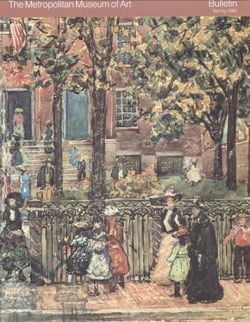A Group of Vultures Waiting for the Storm to "Blow Over"–"Let Us Prey" (from "Harper's Weekly," vol. 15, p. 889)
After Thomas Nast American, born Germany
Publisher Harper's Weekly American
Not on view
Widely considered to be one of the most important American satirists of the nineteenth century, Thomas Nast was the leading cartoonist at Harper’s Weekly from 1859 through 1886. An outspoken defender of principled politicians, Nast targeted leaders whom he deemed unethical through his biting illustrations. These works harnessed popular references that could be easily understood by a partially illiterate audience.
The prototype of power broker William M. "Boss" Tweed as a corrupt fraudster became fixed in the American political imagination thanks to Nast’s series of illustrations published in Harper’s Weekly in the months leading up to the New York state election in 1871, which is credited with helping to sway the public to vote the Democrats out of power. Here, "Boss Tweed" and his associates are depicted as vultures feeding off the taxpayers of New York while waiting for their scandal to "blow over."
Due to rights restrictions, this image cannot be enlarged, viewed at full screen, or downloaded.
This artwork is meant to be viewed from right to left. Scroll left to view more.




